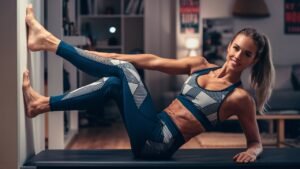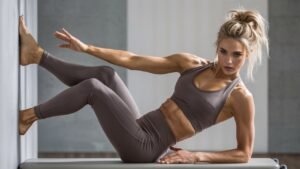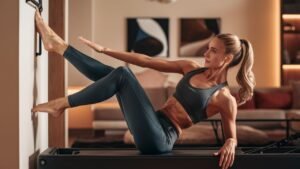Benefits of Practicing Pilates at Home
Integrating Pilates into your home workout routine offers a multitude of advantages that extend beyond physical well-being. One of the primary benefits is the significant improvement in flexibility. Pilates exercises emphasize controlled movements and stretching, which can lead to enhanced flexibility over time. This not only aids in daily activities but also reduces the risk of injuries.
Building core strength is another noteworthy advantage of Pilates. The exercises are designed to engage the deep abdominal muscles and the muscles around the spine. A strong core is essential for maintaining good posture and preventing back pain, making Pilates a valuable addition to any fitness regimen.
Beyond the physical benefits, Pilates also contributes to mental well-being. The focus on precise movements and breathing techniques can enhance mindfulness and reduce stress levels. Many practitioners report a sense of calm and clarity after their sessions, akin to the effects of meditation.
Practicing Pilates at home offers unparalleled convenience. It allows individuals to set their own schedules and exercise at their own pace, without the constraints of class times. This flexibility is particularly beneficial for those with busy lifestyles. Moreover, home workouts eliminate the need for commuting to a gym or studio, saving valuable time and reducing stress associated with travel.
Cost savings are another significant benefit. Studio classes can be expensive, but practicing Pilates at home requires minimal equipment, making it a more economical option. Additionally, the comfort of a personal space can enhance the overall experience, allowing individuals to focus entirely on their practice without any external distractions.
Expert opinions and testimonials further underscore the transformative effects of Pilates. Fitness professionals often highlight the holistic benefits of Pilates, noting improvements in both physical fitness and mental health. Many practitioners share positive experiences, emphasizing how Pilates has helped them achieve a balanced and healthy lifestyle.
Essential Equipment and Basic Pilates Exercises to Get Started
Engaging in a Pilates workout at home requires minimal equipment, making it accessible for many fitness enthusiasts. The most fundamental piece of equipment is a high-quality Pilates mat. This mat should provide sufficient cushioning to protect your spine and joints during exercises. Additionally, resistance bands and small weights are beneficial for adding variety and intensity to your workouts.
For those looking to enhance their practice, optional equipment like a Pilates ring or a stability ball can be incorporated. A Pilates ring, also known as a magic circle, is excellent for adding resistance and targeting specific muscle groups. A stability ball, on the other hand, helps improve balance and core strength.
Once you have your equipment ready, it’s time to dive into some basic Pilates exercises suitable for beginners. Here are a few foundational exercises to get you started:
The Hundred: Begin by lying on your back with your knees bent and feet flat on the floor. Lift your head, neck, and shoulders off the mat while extending your arms alongside your body. Pump your arms up and down while inhaling for five counts and exhaling for five counts, completing a total of 100 pumps. This exercise targets your core and improves circulation.
Roll-Up: Start by lying on your back with your legs extended and arms reaching overhead. Slowly roll up, one vertebra at a time, reaching forward towards your toes. Then, gradually roll back down to the starting position. This exercise enhances spinal flexibility and strengthens your abdominal muscles.
Single-Leg Circles: Lie on your back with one leg extended towards the ceiling and the other leg bent with the foot flat on the mat. Draw small circles with your extended leg, keeping your hips stable. Perform this movement in both directions before switching legs. This exercise works your hip flexors and improves pelvic stability.
To create a balanced routine, include a warm-up and cool-down in your session. A simple warm-up could involve gentle stretching and breathing exercises, while a cool-down might include light stretching and relaxation techniques. Staying motivated and consistent with your Pilates practice is key to seeing progress. Setting specific goals, tracking your achievements, and joining online Pilates communities can help maintain your commitment.




Leave a Comment